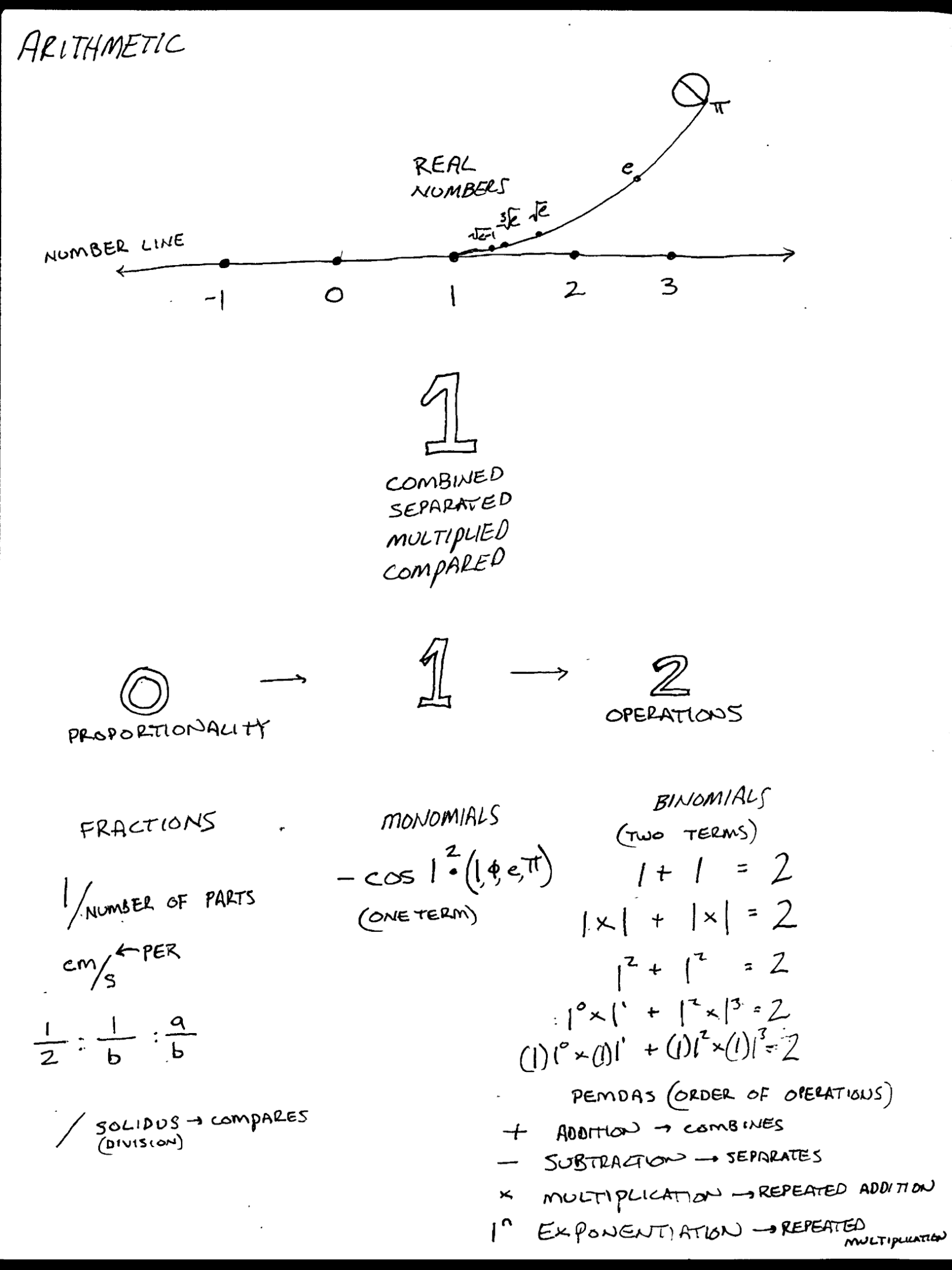
ARITHMETIC
A number line is a way to visualize counting by one. Number lines include negative numbers, zero, fractions and whole numbers. Each interval has equal units. We can also include other constants we determined earlier and imagine them merging with this number line of equal units. All of these numbers are called real numbers.
Once we recognize something as one, it becomes a unit. A unit can be measured, separated, multiplied or compared to other things.
There’s a lot of action happening with numbers between zero and one and one and two. Between 0 and 1, we have proportionality, a way to compare two things. Proportions are typically written as 1/number of parts. A value of a number separated into the number of parts of the other number. Kilometers per hour. Or crop yield per square meter. Proportions may be written using decimals, percentages, rates, ratios, or fractions. Fractions may be written as 1 over any integer, 1/b, one unknown or a/b, two unknowns.
From one to two we have operations. Single expression operations or monomials include: trigonometric functions, negative signs, exponents or multiplying by pi, e, phi. Double expression operations or binomials combine at least two terms. To introduce these operations, let’s observe the various ways we can count to two:
We have, 1+1=2
What other ways can we arrange this equation and arrive at the same answer?
We could say 1×1 + 1×1 = 2
We could also say 1^2 + 1^2 = 2
We could also say 1^0x1^1+1^2×1^3 = 2
And to go one further step, we could say (1)1^0x(1)1^1+(1)1^2x(1)1^3 = 2
To solve equations with multiple terms, we can follow an order of operations. The acronym PEMDAS indicates an order in which to carry out operations. This stands for parenthesis, exponents, multiplication, addition and subtraction.
Addition combines two or more values
Subtraction separates
Multiplication is repeated addition
Exponentiation is repeated multiplication
Sp we can see lots of action between zero and one and one and two. In the next chapter, we’ll talk about another type of scale.